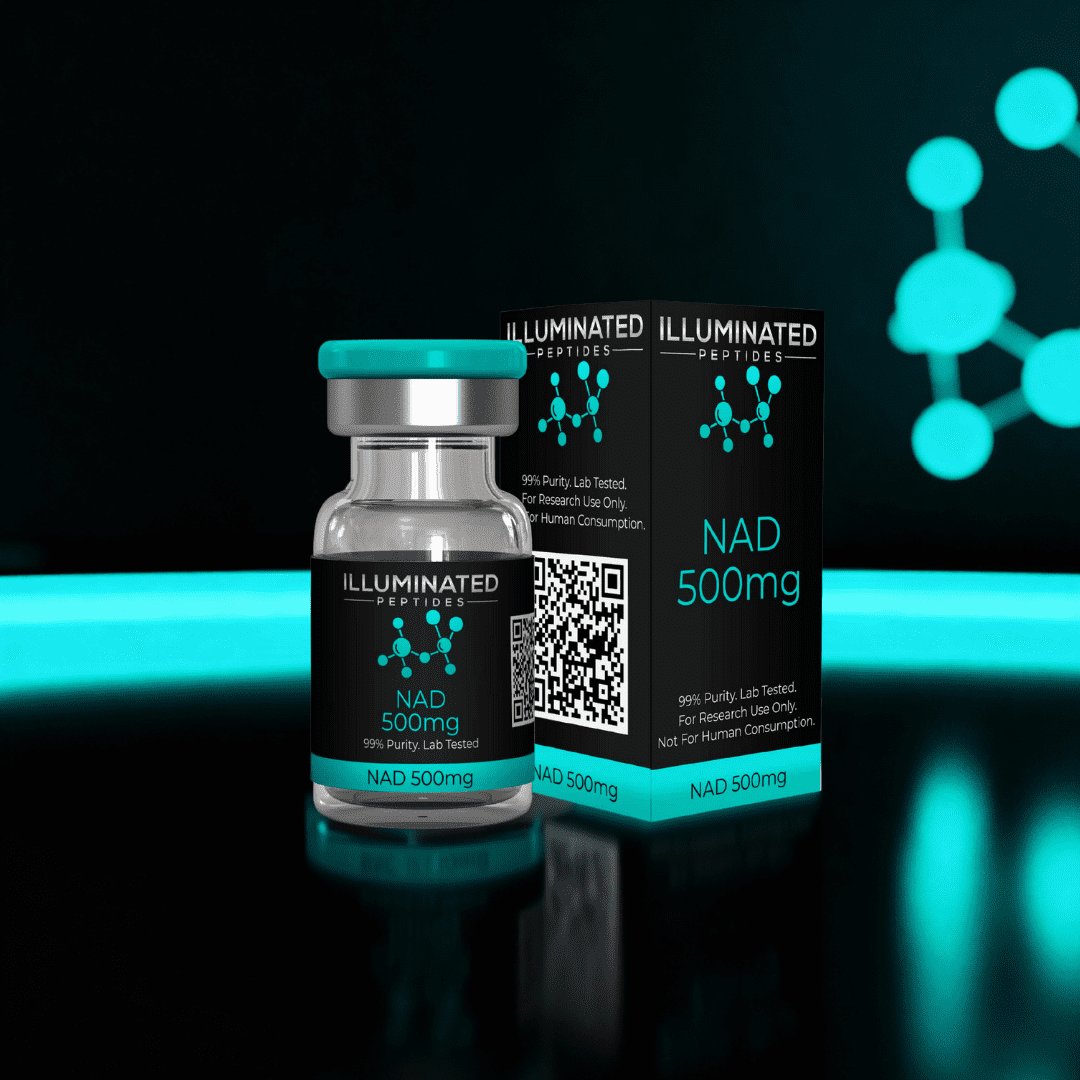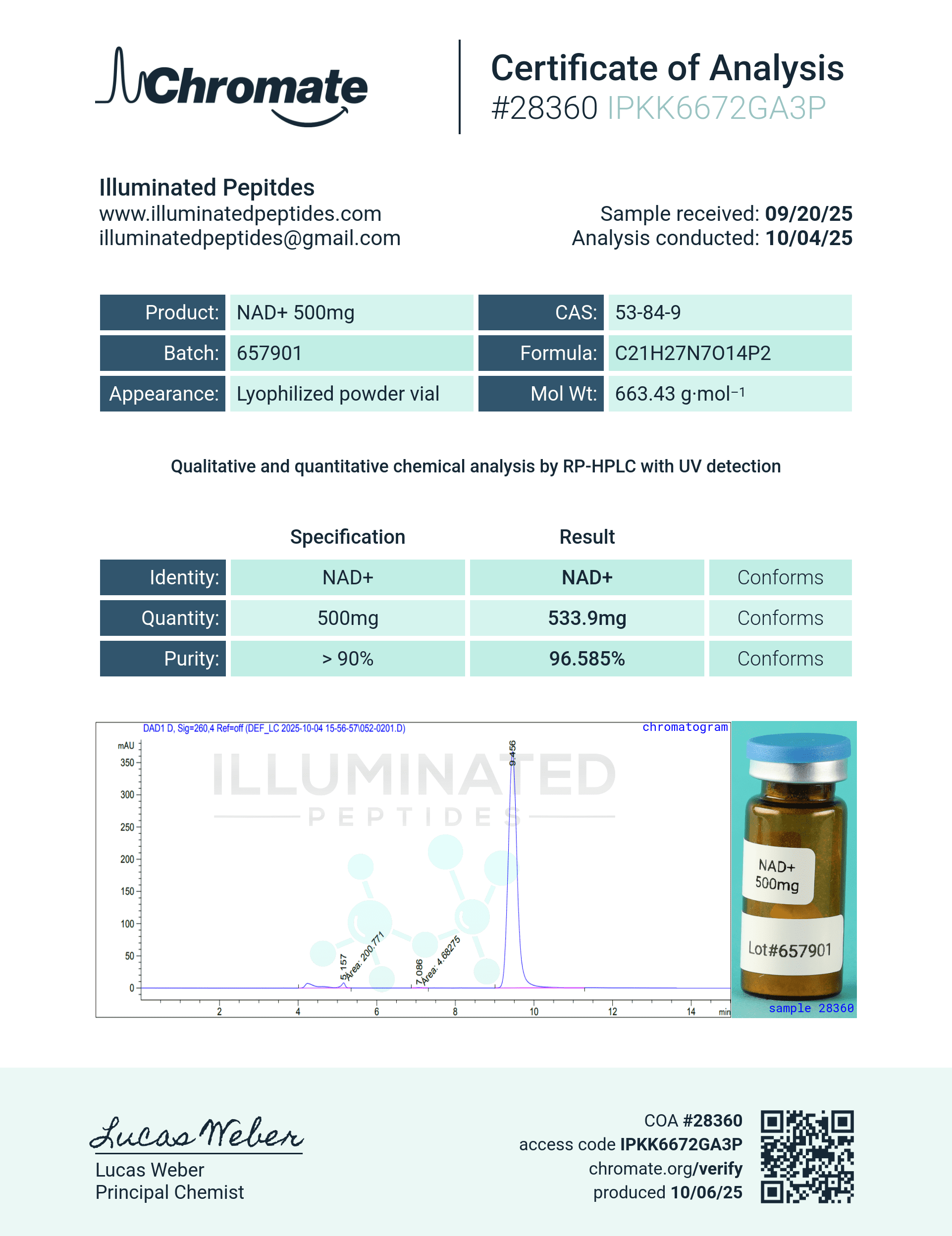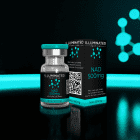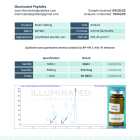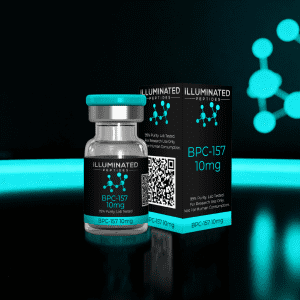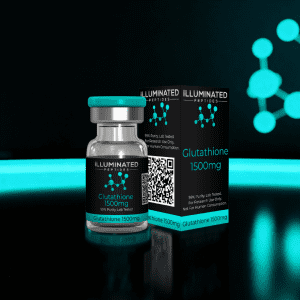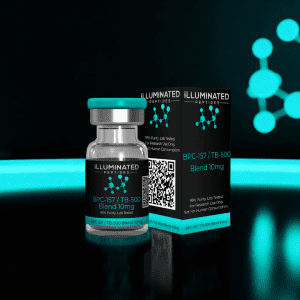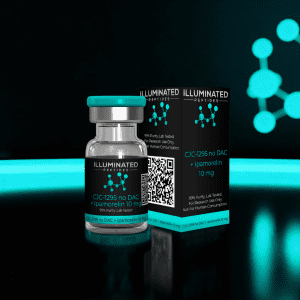Description
What Is NAD?
NAD, or nicotinamide adenine dinucleotide, is the oxidized form of NADH. Its primary biological function is to transport electrons between biochemical reactions, helping transfer energy within cells and, in some conditions, to extracellular environments as well. Beyond its energy-shuttling role, NAD contributes to enzyme regulation, post-translational protein modification, and intercellular signaling. As an extracellular messenger, NAD has been shown to be released from neurons in blood vessels, the bladder, the digestive tract, and specific areas of the brain.
NAD Structure
Sequence: N/A
Molecular Formula: C21H27N7O14P2
Molecular Weight: 663.43 g/mol
PubChem CID:925
CAS Number: 53-84-9
Synonyms: nicotinamide adenine dinucleotide, beta-NAD, NAD, Endopride
NAD Effects
- NAD is a critical support molecule, central to cellular metabolism and extracellular communication. Research indicates that NAD contributes to energy transfer, DNA integrity, immune defense, and circadian rhythm regulation. Natural declines in NAD levels with age or changes in physiological state can affect these key processes.
- NAD activates sirtuins and related enzymes such as poly-ADP-ribose polymerases (PARPs), both of which play important roles in DNA repair and inflammatory signaling. Sirtuins, in particular, are associated with the cellular benefits observed during calorie restriction.
- NAD regulates production of the protein PGC-1α, which supports neuronal and central nervous system cells by reducing oxidative stress. Laboratory studies in animals have linked this action to improved cognitive performance with aging.
- In animal models, NAD has been shown to help protect vascular tissues from age-related stiffening and plaque buildup, with some evidence suggesting a reversal of certain age-associated aortic dysfunctions.
- Research in mice demonstrates that NAD availability can enhance metabolic rate and promote healthier body composition, with higher levels of lean tissue.
- Increased NAD concentrations have also been associated with improved muscle strength and endurance in older animal models.
- NAD has been linked to extracellular signaling, particularly in smooth muscle. This function has been studied in relation to gastrointestinal activity and vascular tone, contributing to experimental findings on blood pressure regulation.
NAD Additions and Synergies
- Since NAD is a naturally occurring coenzyme, it can be combined with other compounds in research to explore potential synergistic effects, often with minimal observed side reactions. This has been demonstrated in multiple preclinical studies.
- Pairing NAD with high-dose biotin has been studied for its potential to influence pain pathways and reduce discomfort in animal models.
- Coenzyme Q10 (CoQ10), another factor in mitochondrial energy metabolism, may act synergistically with NAD to support neurological function and help defend the central nervous system against oxidative stress.
- Resveratrol and NAD have been shown in research settings to work together in reducing oxidative stress, moderating inflammatory activity, and lowering LDL cholesterol levels. These compounds may also cooperate in protecting against metabolic and neurodegenerative changes in experimental models.
- B vitamins, particularly B1, B2, and B6, assist in NAD salvage pathways. When studied in combination with NAD supplementation, they have been linked to improved maintenance of cellular NAD levels.
- NAD may also work alongside mitochondrial support agents such as creatine and alpha-lipoic acid, enhancing antioxidant activity and supporting cellular resilience in aging studies.
NAD Research
Anti-Aging Research and NAD
One of the central outcomes of natural aging is a decline in mitochondrial performance and structural integrity. Mitochondria are the energy-producing centers of cells, fueling processes ranging from neural signaling to digestion and muscle contraction. Reduced mitochondrial efficiency is a hallmark of aging and is also implicated in age-related biological changes. Scientific findings suggest that mitochondrial decline contributes to cellular senescence, chronic inflammation, and alterations in stem cell behavior, all of which hinder tissue repair and overall recovery capacity in older organisms.
According to Nuo Sun of the National Institutes of Health, mitochondria are not merely “bioenergetics factories,” but also act as platforms for intracellular communication, regulators of immune activity, and modulators of stem cell function. He explains that mitochondria are directly tied to many processes of aging, including senescence, immune dysregulation, and the general decline in tissue and organ function. Protecting mitochondrial health is therefore viewed as essential to addressing age-related biological changes.
Recent research indicates that some of this age-related mitochondrial decline may be reversed through supplementation with NAD precursors. This concept was advanced by David Sinclair of Harvard University, who previously identified the potential anti-aging properties of resveratrol. In 2013, Sinclair and colleagues reported that NAD precursors administered to mice restored mitochondrial function in muscle tissue to a more youthful state.
That same year, studies showed that lowered NAD levels trigger a pseudohypoxic cellular condition, which disrupts communication between nuclear DNA and mitochondria. By replenishing NAD in older mice, researchers observed restoration of mitochondrial signaling and cellular coordination.
Part of NAD’s ability to counteract aging processes lies in its role in activating SIRT1, a gene encoding the NAD-dependent deacetylase sirtuin-1. Sirtuin-1 is a key enzyme regulating proteins linked to metabolism, stress response, and longevity.
The Role of NAD in Muscle Function
Another connection between NAD and aging lies in skeletal muscle. In mouse studies, muscle decline occurs in two phases: first, oxidative phosphorylation decreases due to reduced mitochondrial gene activity; later, both mitochondrial and nuclear genes governing energy production become impaired. The first stage is reversible, and experimental NAD administration has been shown to restore mitochondrial function, preventing further decline. If intervention is delayed, however, progression to the second stage results in dysfunction that NAD cannot reverse. These findings suggest that earlier intervention with NAD in laboratory models is crucial to preserving muscle health during aging.
Interestingly, endurance exercise appears to mimic many of the same benefits as NAD supplementation. Both strategies prevent harmful changes in PGC-1α signaling, a regulator of mitochondrial biogenesis. Mouse models of aging demonstrate that exercise training helps sustain oxidative capacity throughout life, in part by elevating PGC-1α levels, which support mitochondrial DNA, oxidative proteins, and vascular growth factors.
NAD in Neurodegenerative Research
Much of the knowledge gained about NAD and aging also extends to neurodegenerative models. Alterations in NAD have been linked to conditions such as Alzheimer’s, Huntington’s, and Parkinson’s disease. A 2019 review highlighted NAD’s neuroprotective effects in mouse models, where boosting NAD improved mitochondrial efficiency and reduced production of reactive oxygen species (ROS). Since ROS contribute to both aging and neuroinflammation, lowering ROS is considered beneficial.
Researchers have also explored combining NAD supplementation with inhibitors of PARP enzymes. While PARPs are necessary for DNA repair, their overactivation can deplete cellular NAD and ATP, leading to cell death. Regulating this balance through combined interventions may provide protective effects.
In Parkinson’s research, NAD supplementation has been shown to preserve dopaminergic neurons and reduce motor decline in animal models. Additional studies on the kynurenine pathway (KP) reveal that NAD metabolism may help conserve neurotransmitter levels by reducing tryptophan degradation. Dysregulation of this pathway has been linked to multiple neurological and psychiatric conditions, sparking further interest in NAD as a focus for brain health research.
The Role of NAD in Inflammation
NAD is tightly regulated by enzymes such as NAMPT, which is often overexpressed in certain cancers and inflammatory conditions. NAMPT activity has been associated with obesity, type 2 diabetes, and fatty liver disease, all of which involve chronic inflammation. Elevated NAMPT levels are frequently observed as NAD levels decline. Research suggests that maintaining NAD availability may help balance NAMPT activity and reduce inflammatory signaling in preclinical models.
This NAD–NAMPT dynamic is thought to be a driver of insulin resistance linked to obesity. Reduced NAD impairs metabolic regulation, increasing circulating fatty acids and raising blood glucose. These effects collectively lead to insulin resistance, which over time can contribute to diabetes and cardiovascular dysfunction.
NAD in Addiction Research
It has long been recognized that drug and alcohol exposure can deplete NAD stores, leading to nutrient deficiencies and alterations in mood and cognition. Research into NAD supplementation as a support for addiction recovery dates back to the 1960s and has seen renewed interest in recent years. Preclinical evidence suggests that NAD, when combined with amino acid complexes, may help reduce cravings and support stress resilience, contributing to recovery outcomes.
NAD Supplementation and the Future of Research
Animal models consistently suggest that NAD supplementation can mitigate some effects of mitochondrial decline associated with aging. Current efforts are focused on advancing this work into clinical studies, particularly in metabolic and neurodegenerative conditions. Early findings support the hypothesis that NAD could play a key role in slowing age-related decline, with ongoing studies examining its broader applications in health and longevity research.
Preclinical testing has also demonstrated favorable tolerability, with minimal side effects reported and good oral and subcutaneous bioavailability in animal models. It is important to note that research dosages in animals do not translate directly to human use.

